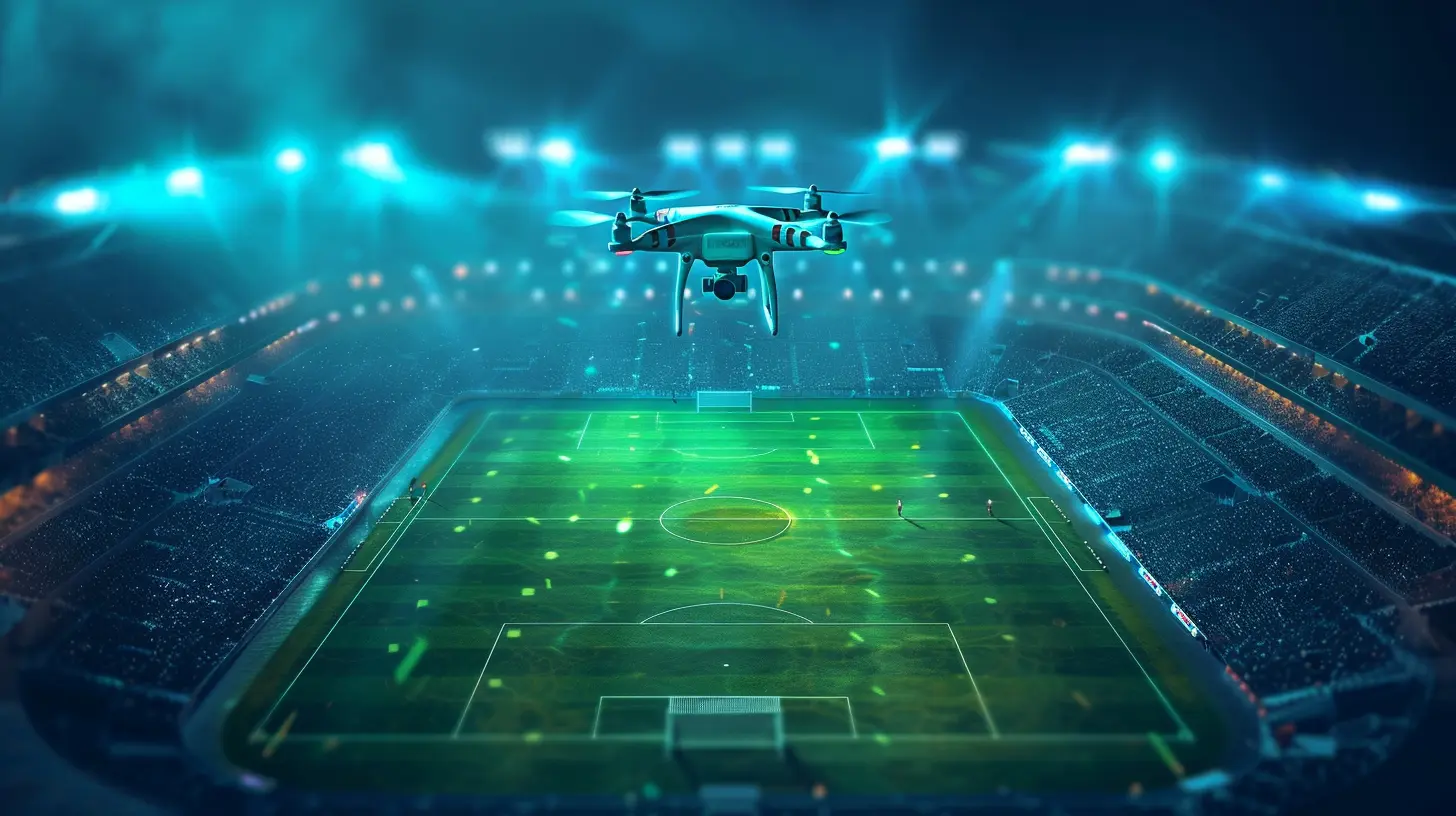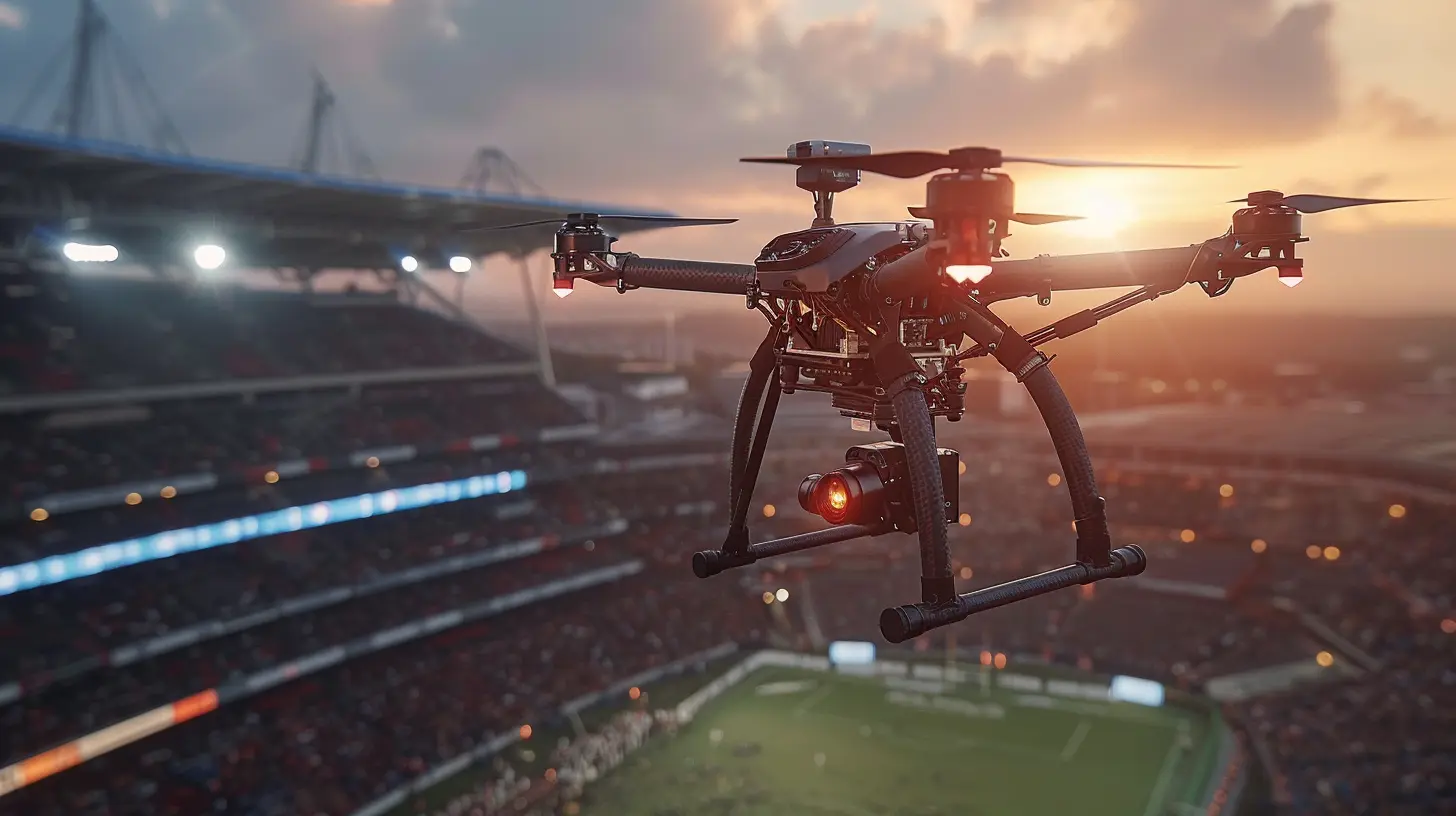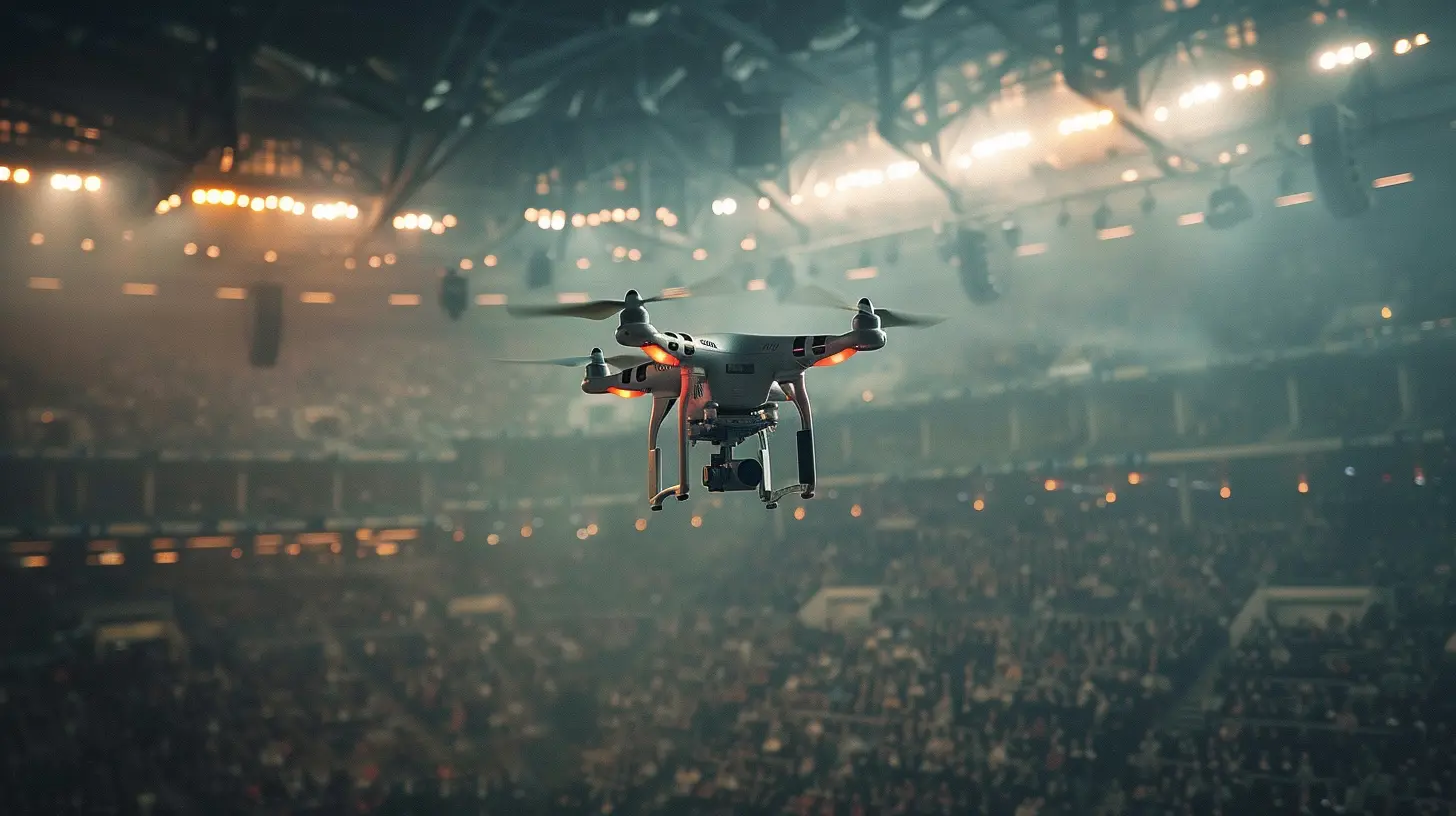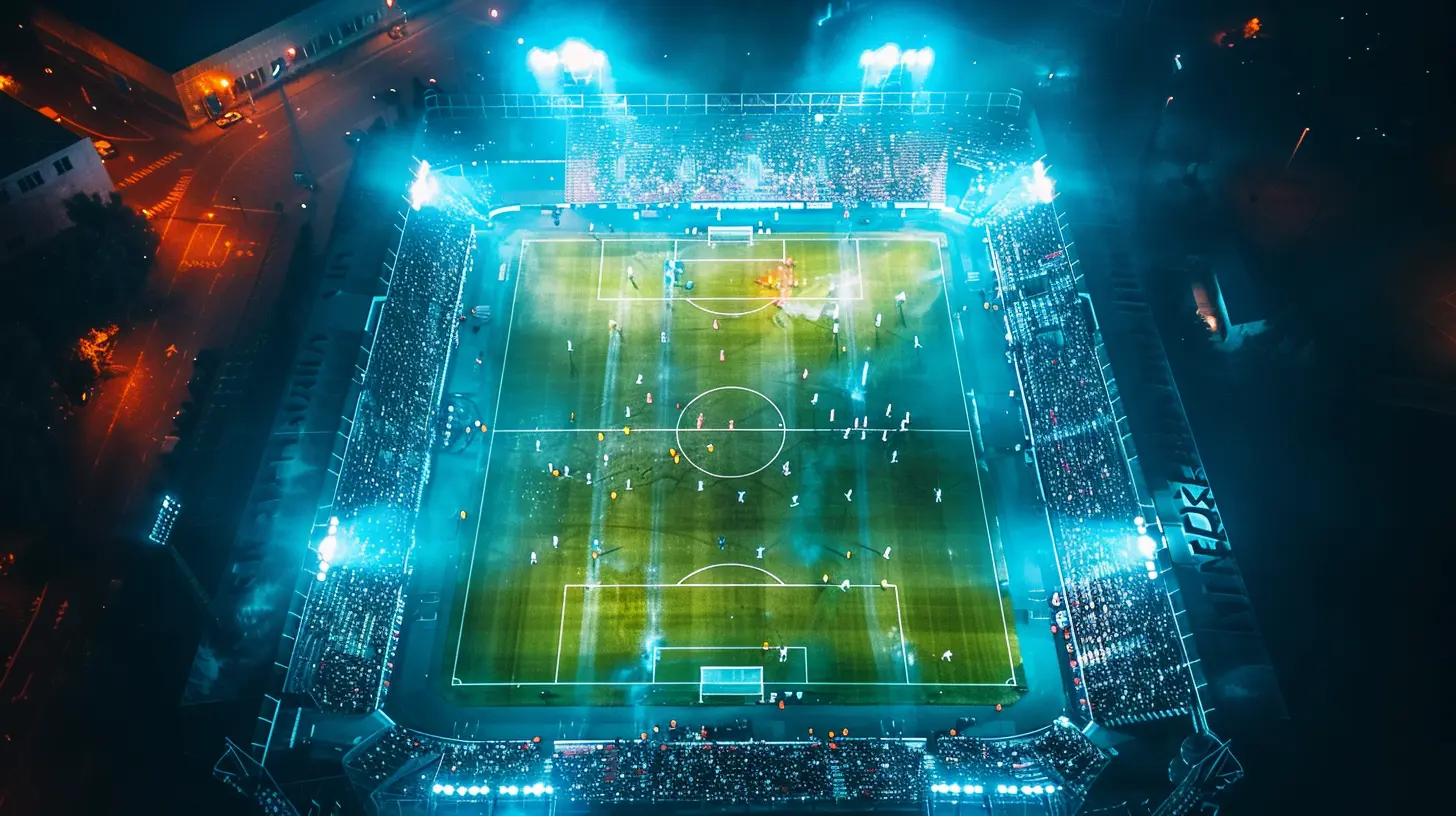Exploring the Use of Drones in Sports Coverage
2 July 2025
Technology has completely reshaped the way we experience sports. From ultra-HD broadcasts to instant replays and goal-line technology, the sports industry has seen some incredible advancements. But one of the most exciting game-changers? Drones.
Yes, those buzzing flying machines aren’t just for hobbyists anymore. They’ve taken over the world of sports coverage, giving us breathtaking angles and never-before-seen perspectives. Whether it's capturing high-speed action in motorsports or providing a bird’s-eye view of a soccer match, drones are revolutionizing the way we watch our favorite games.
So, how exactly are drones changing sports coverage? And what does the future look like? Let’s dive in. 
The Evolution of Sports Broadcasting
Before we get into drones, let’s take a quick trip down memory lane. Sports coverage wasn’t always as immersive as it is today. Decades ago, fans relied on grainy black-and-white broadcasts with very few camera angles. Fast-forward to today, and we can watch live games from multiple perspectives, in stunning 4K, with ultra-slow-motion replays.Traditional camera setups, including cranes, cable cams, and helicopter shots, have all played their part in improving sports coverage. But they all have limitations—whether it’s high costs, safety concerns, or restricted movements. And that’s where drones come in as a game-changer. 
How Drones Are Transforming Sports Coverage
Drones, or UAVs (Unmanned Aerial Vehicles), offer something completely fresh—unrestricted movement, dynamic angles, and the ability to capture never-before-seen shots. Here are some of the biggest ways drones are improving sports broadcasting:1. Unmatched Aerial Views
Drones provide sweeping aerial perspectives that were once only possible with helicopters. But unlike helicopters, which are expensive and noisy, drones are affordable, quiet, and can fly lower for more detailed shots.Imagine watching a soccer match from directly above, seeing formations unfold in real-time. Or a golf tournament where a drone smoothly follows the ball from tee to green. These are shots that traditional cameras just can’t achieve.
2. Up-Close Action Shots
Ever watched extreme sports events like skateboarding, surfing, or snowboarding? Drones are giving us jaw-dropping close-ups of these fast-paced moments.For instance, in surfing contests, drones follow surfers as they ride massive waves, providing angles that make you feel like you're right there in the water with them. In cycling races, drones can zoom in on individual riders as they navigate tricky terrains.
This kind of immersive experience wasn’t possible before, and it's changing the way we engage with sports.
3. Increased Flexibility and Mobility
One of the biggest advantages of drones is how agile they are. They can move in any direction—hover, dive, accelerate, or slow down—all while tracking the action with pinpoint precision.Compare this to fixed-position cameras or cable cams that have limited movement. With drones, broadcasters can keep up with fast-moving sports like motorsports, skiing, and even horse racing without missing a beat.
4. Cost-Effective Alternative to Traditional Methods
Filming a sports event with helicopters or high-end cranes costs a fortune. Drones, on the other hand, are far more affordable while delivering stunning visuals.Broadcasters can now produce high-quality footage without the logistical nightmare of setting up massive equipment. This is especially helpful for smaller sports organizations that don’t have the budget for fancy camera setups.
5. Enhancing Referee & Coaching Decisions
It’s not just fans who benefit from drone technology—officials and coaches do too.Referees can use drone footage to get a better perspective on controversial plays, ensuring more accurate decisions. Coaches, on the other hand, can analyze aerial footage to study formations, player movements, and team strategies, helping them refine their game plans. 
Drone Usage Across Different Sports
Drones aren’t limited to just one sport; they’re making waves across multiple disciplines. Let’s look at a few examples:Football & Soccer
Drones capture unique overhead shots, allowing broadcasters to showcase tactical formations and player movements more effectively. Coaches use drone footage for strategy analysis, helping teams improve performance.Motorsports
In Formula 1 and MotoGP, drones provide high-speed tracking shots, giving fans a closer view of the action without the need for expensive helicopter cameras.Extreme Sports
Skateboarding, BMX, snowboarding, and surfing benefit massively from drone footage. They allow for creative, fast-paced tracking shots that make viewers feel like they’re right in the middle of the stunts.Golf
Drones enhance golf broadcasts by tracking the ball’s flight path, capturing the entire landscape of the course, and providing dynamic aerial perspectives that traditional cameras can’t achieve.Tennis
Though still in early adoption stages, drones can be used to capture unique angles and analyze player positions during high-intensity matches.Marathons & Cycling Races
Covering long-distance races has always been a challenge. Drones provide real-time tracking of athletes, delivering a far more engaging viewing experience.
Challenges & Limitations of Using Drones in Sports Coverage
As exciting as drone technology is, it’s not without its challenges. Here are a few hurdles broadcasters and event organizers face:Regulation and Legal Issues
Many countries have strict laws governing drone use, especially in crowded areas like stadiums. Broadcasting companies need to comply with these regulations to avoid legal trouble.Weather Constraints
Drones struggle in extreme weather conditions—strong winds, heavy rain, or fog can limit their usability. In outdoor sports, unpredictable weather can sometimes be a deal-breaker.Battery Life Limitations
While drone technology is improving rapidly, battery life remains a concern. Most high-end drones can only fly for 20-30 minutes before needing a recharge or battery swap.Potential Safety Risks
Although drones are becoming safer, accidents can still happen. If a drone malfunctions and crashes into a crowd, the results could be disastrous. That’s why strict safety protocols need to be in place.The Future of Drones in Sports Broadcasting
Despite these challenges, the future of drones in sports coverage looks incredibly promising. As technology advances, we can expect:- Longer Battery Life: Manufacturers are developing more efficient batteries that will allow drones to operate for extended periods.
- AI-Powered Drones: Future drones may use AI to track players automatically, adjusting angles and focus in real time.
- 5G-Powered Streaming: With ultra-fast 5G networks, drones will be able to stream live footage with zero lag, enhancing the viewer experience even further.
- More Widespread Adoption: As drones become more affordable and regulations become clearer, more sports organizations will incorporate them into their coverage strategies.
One thing’s for sure—drones will continue to push boundaries and redefine how we experience sports.
Final Thoughts
Drones have taken sports coverage to an entirely new level, providing breathtaking angles, immersive action shots, and cost-effective broadcasting solutions. From football fields to surf competitions, drones are giving fans a front-row seat to all the action like never before.As technology continues to evolve, we’re only scratching the surface of what drones can do in the world of sports. So, the next time you’re watching a live game and see an incredible aerial shot, just remember—it might just be a drone making all the magic happen.
all images in this post were generated using AI tools
Category:
DronesAuthor:

Vincent Hubbard
Discussion
rate this article
1 comments
Rhea Baxter
Finally, drones in sports! Now we can watch our favorite teams lose from even higher up!" 🏈🚁
July 20, 2025 at 10:26 AM

Vincent Hubbard
Absolutely! Drones offer a unique perspective that can enhance the viewing experience, even if our teams don’t always come out on top! 🏈🚁


